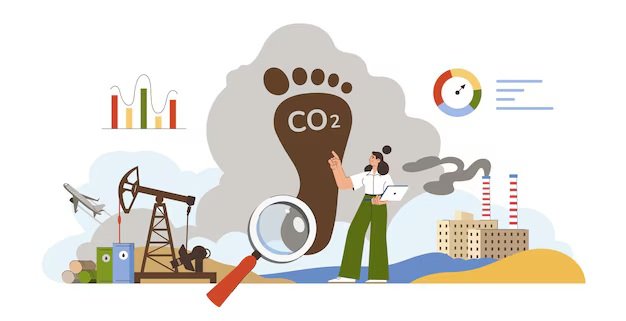What Is Polyvinyl Alcohol (PVA) and Its Impact on the Environment?
Imagine throwing a laundry pod into your washing machine, rinsing your mouth with your daily vitamin supplement, or putting in your contact lenses. Now imagine that with each of these small actions, you’re unknowingly releasing a form of plastic into the environment.
This is the reality of polyvinyl alcohol (PVA)—a synthetic polymer designed to dissolve in water. Because it vanishes before our eyes, it feels harmless. But does disappearing mean it’s truly gone? Not exactly. PVA has sparked a debate among scientists and environmentalists about whether it’s a green solution or just another hidden pollutant.
In this guide, we’ll break down what PVA is, where it’s found, how it impacts the environment, and what you can do about it. We’ll also dive into expert insights, real-world research, and practical solutions so you can make informed choices about the products you use every day.

In This Article
- What Is Polyvinyl Alcohol (PVA)?
- PVA and the Environment: A Closer Look
- PVA in Everyday Products: What Consumers Should Know
- Can PVA Be Sustainable? Solutions and Alternatives
- Conclusion: What Can You Do?
What Is Polyvinyl Alcohol (PVA)?
Polyvinyl alcohol (PVA or PVOH) is a synthetic, water-soluble plastic derived from another polymer called polyvinyl acetate. Through a process called hydrolysis, it becomes a material that dissolves in water, making it widely used in industries that prioritise convenience and single-use applications.
Where You’ll Find PVA in Everyday Life:
- Laundry & Dishwasher Pods – The thin, dissolvable film that holds detergent
- Medical Products – Found in eye drops, contact lens solutions, and pill coatings
- Food Packaging – Used as an emulsifier or binder in some edible films
- Textiles & Adhesives – Used in fabric treatments and glues
- Paper Coatings – Enhances the gloss and printability of certain papers
Because it dissolves in water, PVA is often marketed as eco-friendly. However, dissolving doesn’t mean disappearing. Many wastewater treatment plants struggle to break it down completely, meaning traces of PVA can still make their way into rivers, lakes, and oceans.
So, is PVA a sustainable alternative to traditional plastics or just another way plastic pollution sneaks into our environment? Let’s explore the science, the controversy, and the solutions.
PVA and the Environment: A Closer Look
1. Does PVA Truly Biodegrade?
A 2024 study published in Environmental Science & Technology examined how PVA behaves in different water environments—wastewater, freshwater, and seawater. The researchers found that after 30 days, PVA degraded by about 32.2% in wastewater, 5.9% in freshwater, and only 3.3% in seawater. This suggests that while PVA breaks down more readily in wastewater, it lingers much longer in natural water bodies like rivers and oceans.

Another study from 2021 focused on PVA’s biodegradability in marine environments. The results showed minimal degradation over 28 days, indicating that PVA persists in seawater unless specific microorganisms are present to break it down.
Key Takeaway: While PVA can degrade under controlled conditions, such as in wastewater treatment plants, its breakdown in natural aquatic environments is significantly slower. This slow degradation means PVA can accumulate in these ecosystems over time.
2. The Microplastic Debate: Is PVA a Hidden Pollutant?
When we think of microplastics, we often picture tiny fragments from larger plastic items. However, PVA introduces a different concern. Even though it dissolves in water, it doesn’t vanish—it transforms. This transformation can lead to the formation of nano-sized plastic particles that are invisible to the naked eye but may still pose environmental risks.
Biodegradation Challenges
A 2024 review published in Carbohydrate Polymers highlighted that PVA falls into the category of biodegradable polymers, as it may be broken down by 75% within approximately 46 days by bacteria and enzymes. However, the study emphasises that the biodegradation rate is influenced by various factors, and in many cases, PVA remains resistant to complete breakdown, raising concerns about its accumulation in different environmental settings.
Expert Insight
Dr. Rachel Adams, an environmental chemist at Loyola Marymount University, emphasizes, “Just because a polymer is water-soluble doesn’t mean it’s harmless. PVA fragments may still pose risks we don’t fully understand.”
Real-World Example
Recent studies have detected microplastics in various environments, including marine ecosystems and even within wildlife. For instance, research has found microplastics in bird lungs, highlighting the pervasive nature of plastic pollution. While these studies don’t single out PVA, they show the broader issue of microplastic accumulation in nature.
Key Takeaway: PVA’s water solubility doesn’t guarantee environmental safety. Its potential to form micro- and nano-sized plastic particles means it could contribute to the broader microplastic pollution problem, with impacts that are still being studied.
Learn More: Are Orbeez Biodegradable?
PVA in Everyday Products: What Consumers Should Know
Case Study: Laundry Pods and Hidden Plastic Pollution
Laundry detergent pods, praised for their convenience, often use PVA-based dissolvable films. While marketed as eco-friendly, the reality is more complex.
Fact Check: How Much PVA Enters the Environment?
Recent studies have raised concerns about the environmental impact of PVA used in laundry and dishwasher detergent pods. A 2021 study published in the International Journal of Environmental Research and Public Health estimated that approximately 8,000 metric tons of PVA from these pods enter U.S. wastewater treatment plants annually. Of these, about 75% may persist in the environment, potentially contributing to plastic pollution in waterways and soil.
However, it’s important to note that these findings have been subject to debate. The American Cleaning Institute (ACI) argues that the grade of PVA used in detergent pods is designed to dissolve completely and biodegrade within hours in wastewater treatment facilities. They contend that there is no scientific evidence indicating that this form of PVA becomes microplastic.
This ongoing debate highlights the need for further independent research to fully understand the environmental fate of PVA from detergent pods and its potential long-term consequences.
Beyond Pods: Other Sources of PVA Exposure
Our daily routines involve products that may contribute to PVA pollution:
- Contact Lenses: Many daily disposable lenses contain PVA coatings. Improper disposal, such as flushing them down the toilet or sink, can lead to these plastics entering wastewater systems. It’s estimated that between six to ten metric tons of plastic lenses end up in U.S. wastewater each year, posing threats to aquatic environments.
- Food Packaging: Some “edible” films use PVA. While innovative, the safety and degradation of these materials in natural settings remain under scrutiny.
- Pharmaceuticals: Pills and capsules often contain PVA-based coatings, contributing to their spread in wastewater.
Can PVA Be Sustainable? Solutions and Alternatives
Enhancing PVA Biodegradation
While PVA’s solubility in water is advantageous, its complete biodegradation in natural environments remains a challenge. Researchers are actively seeking methods to improve this process:
1. Enzymatic Breakdown
Scientists are investigating specific enzymes capable of efficiently degrading PVA. By identifying and harnessing these enzymes, we can potentially accelerate PVA’s decomposition, reducing its persistence in the environment.
2. Microbial Solutions
Certain bacteria have shown promise in breaking down PVA. For instance:
- Stenotrophomonas sp. SA21: This novel strain degraded 90% of PVA in a controlled study within four days.
- Bacillus cereus RA23: Isolated from oil sludge, this bacterium achieved an 85% degradation rate of PVA over five days under optimised conditions.
These findings suggest that leveraging such microorganisms could be a viable strategy for mitigating PVA pollution.
3. Advanced Wastewater Treatment
Enhancing wastewater treatment processes is crucial to prevent PVA accumulation in aquatic systems. Implementing advanced filtration and degradation technologies can effectively remove PVA residues before they enter natural water bodies.
Embracing Eco-Friendly Alternatives
As consumers, we have the power to choose products that minimise environmental harm. Here are some sustainable alternatives to PVA-containing items:
1. Plastic-Free Laundry Detergents
Traditional laundry pods often contain PVA, which can contribute to microplastic pollution. Consider these alternatives:
- Blueland Laundry Tablets: These plastic-free tablets are free from PVA/PVOH and come in compostable packaging. They offer a convenient, eco-friendly solution without compromising on cleaning power.
- Hexawash All-Natural Laundry Detergent Alternative: Utilising magnesium pellets, this innovative product cleans clothes effectively without any synthetic chemicals or plastics. It’s designed to last for 300 washes, making it both economical and sustainable.
2. Biodegradable Contact Lenses
The disposal of daily-use contact lenses contributes to plastic waste. Some companies are developing lenses made from natural, compostable materials, reducing the environmental footprint associated with their use.
3. Natural Binders in Products
Manufacturers are exploring plant-based polymers like alginate and cellulose as alternatives to PVA in various applications, including food packaging and adhesives. These natural materials offer similar functionality without the environmental concerns associated with synthetic polymers.
Learn More: Is Gum Biodegradable?
Conclusion: What Can You Do?
While PVA may not be as visibly harmful as traditional plastics, its environmental impact remains uncertain. As research continues, here’s how you can make a difference:
Actionable Steps for Consumers:
- Check ingredient labels for PVA-based products and opt for alternatives where possible.
- Support companies investing in true biodegradability, not just water solubility.
- Advocate for better waste treatment to ensure PVA doesn’t accumulate in ecosystems.
- Reduce single-use plastics, including PVA-based dissolvable films.
- Stay informed by following scientific research on PVA’s environmental impact.
The story of PVA is still being written. While it offers unique advantages, its environmental consequences demand closer scrutiny. By making informed choices, we can push for innovations that balance convenience with sustainability. The question isn’t just “Is PVA bad?”—it’s “How can we do better?”







